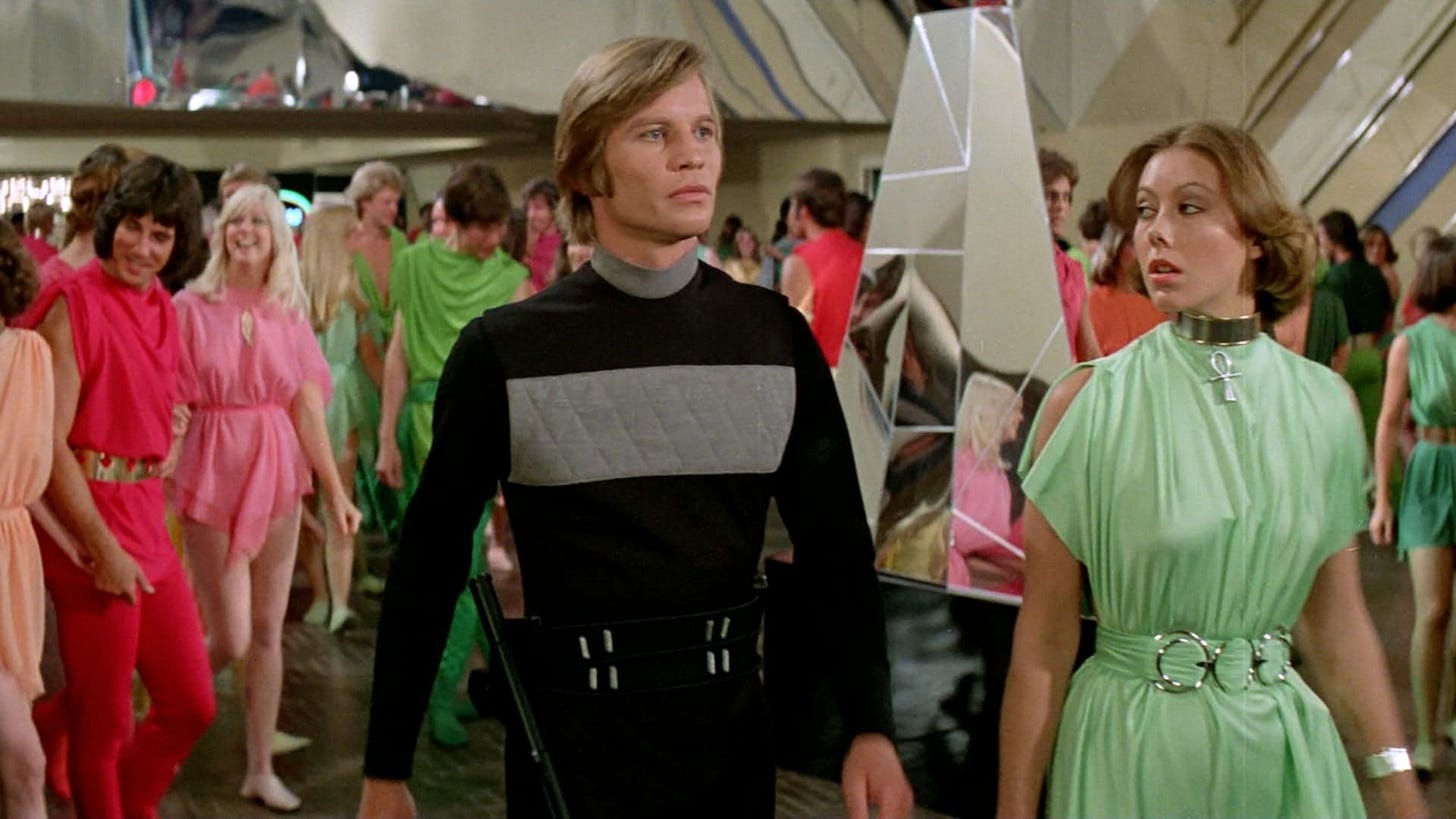Logan’s Run (1976), directed by Michael Anderson, is a seminal science fiction film that explores themes of youth obsession, societal control, and the human yearning for freedom. Based on the 1967 novel by William F. Nolan and George Clayton Johnson, the film presents a dystopian future where life ends at 30, and those who attempt to escape this fate are hunted down.
Plot Overview
Set in the year 2274, humanity resides within a domed city governed by a computer system. Citizens lead hedonistic lives, free from the concerns of aging or disease. However, this utopia has a dark underpinning: to maintain population control, individuals are subjected to “Carrousel” upon reaching 30, a ritual that purportedly offers renewal but in reality results in death.
Each person bears a “life-clock” crystal in their palm, indicating their age and flashing red as they approach their “Last Day.” Those who attempt to flee this fate are labeled “Runners” and are pursued by “Sandmen,” enforcers tasked with terminating them.
The narrative follows Logan 5 (Michael York), a Sandman who, after being assigned to infiltrate the group aiding Runners, finds his own life-clock accelerated. Accompanied by Jessica 6 (Jenny Agutter), a member of the resistance, Logan escapes the city, confronts the realities of the outside world, and ultimately challenges the very system he once upheld.
Themes and Interpretations
Logan’s Run delves into several profound themes:Medium
- Youth Obsession and Ageism: The society depicted values youth to the extent of mandating death at 30, reflecting real-world anxieties about aging and societal worth.
- Conformity vs. Individuality: The film critiques a system that suppresses individual desires and freedoms under the guise of societal harmony.
- Illusion of Utopia: The domed city represents a controlled environment where the illusion of perfection masks underlying oppression.
- Search for Truth and Freedom: Logan’s journey symbolizes the human quest for authenticity and liberation from imposed constraints.
These themes resonate with the socio-political climate of the 1970s, a period marked by questioning authority and exploring new societal norms.
Production and Visuals
The film’s production design is notable for its innovative use of practical effects and set designs that encapsulate the futuristic aesthetic of the era. The domed city’s interiors, with their sleek lines and vibrant colors, contrast starkly with the decaying ruins of the outside world, symbolizing the dichotomy between artificial perfection and natural decay.
Special effects, particularly the depiction of Carrousel and the life-clock crystals, were groundbreaking at the time. The film’s visual achievements were recognized with a Special Academy Award for visual effects.
Reception and Legacy
Upon release, Logan’s Run received mixed reviews. Roger Ebert awarded it three out of four stars, acknowledging its entertainment value despite narrative flaws. Variety praised its escapism and intelligence, while other critics pointed out inconsistencies in the plot and character motivations.
Commercially, the film was successful, grossing $25 million in North America and aiding MGM’s financial recovery. It won six Saturn Awards, including Best Science Fiction Film, and has since achieved cult status.
The film’s influence extends to various media, inspiring discussions on societal structures and individual freedoms. Its themes remain relevant, prompting reflections on contemporary issues such as age discrimination and the balance between societal order and personal liberty.
Conclusion
Logan’s Run stands as a thought-provoking exploration of a society that sacrifices individuality and longevity for the illusion of harmony. Through its compelling narrative and visual storytelling, the film invites audiences to consider the value of life, the dangers of conformity, and the enduring human spirit’s quest for freedom.
Logan’s Run (2025) | First Teaser Trailer | Starring Margaret Qualley & Anya Taylor-Joy

